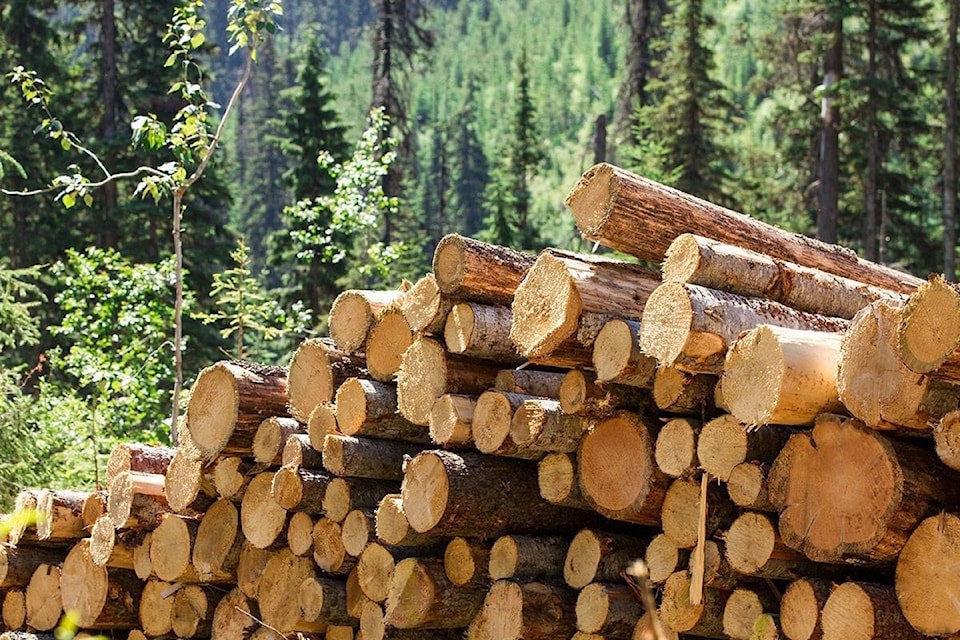Just over a month after the British Columbia government announced it would push an initiative to renew the Interior forestry industry, some say the province is a bit late to the game.
The initiative seeks to maximize the potential of existing amounts of timber amid the challenges of mountain pine beetle reducing the supply, the impact of wildfires and lower lumber prices.
But the Burns Lake Community Forest (BLCF) has been working on plans to tackle these problems for two years, as Frank Varga, General Manager of the BLCF told Lakes District News.
“We have done a lot of work which directly supports the announcement, and we just can’t understand why it’s not being taken more seriously. As an area-based tenure we could be implementing the initiative as presented,” he said.
Of the province’s wide-ranging proposal, Varga pointed to its mention of the reduced timber supply, and said that though it’s fact it will go down, there are also opportunities in the existing supply that BLCF can pursue.
“We can offset some of those feared losses if we pursue these opportunities. We just need the willpower.”
One opportunity is the amount of timber in Visual Quality Objective (VQO) areas, which Varga said contains 43 per cent of the BLCF’s mature timber.
“The problem we have is that a lot of that has been impacted by mountain pine beetle. It’s also a major hazard. How can we be managing for those requirements?” he asked.
A technical paper Varga co-authored in May 2018 along with BLCF president Crystal Fisher, laid out some of the risks of those areas.
“A considerable amount of this is in close to very close proximity to the community of Burns Lake, as well as Tchesinkut Lake, Francois Lake, and Decker Lake rural communities. BLCF is committed to meet VQO objectives where feasible to do so; however, considerable areas within VQO…are dead pine and are blowing down.”
Removing the dead pine from those areas could reduce fire hazards and boost harvesting activity, in so doing satisfying two of the aims of the B.C. renewal initiative.
Bringing a flexible approach to planning will help the BLCF move away from the constraints of some of the older plans, Varga said.
“We need to be dynamic in our management. We should be recruiting new areas for Old Growth Management Areas rather than having one single spot. We should be moving them around the landscape.”
“The other one is the landscape connectivity corridors. These were put in to create this concept of connectivity between landscapes. Some of these areas are dead pine. It’s an unnatural approach. When fire came through the corridors were severed.”
Further to fire hazard reduction, the paper also mentions the value of growing fire-resistant deciduous species such as aspen and poplar around communities.
Neighbouring Granisle has already approved a fire safety plan to cut down 135 hectares of coniferous stands around the village and replace them with deciduous species.
READ MORE: Granisle to grow fire buffer of deciduous trees around village
John Rustad, MLA for Nechako Lakes said he thinks the government’s renewal initiative has merit but its approach is flawed.
“I support the concept of local input into plans. However, the government needs to be at the table and leading the discussions. They seem to think that all of this is on industry, communities, First Nations and unions. Government also does not seem to have provided any financial resources for the players to fully participate in this process,” he said.
“Without government leadership I worry the process will not yield the desired results leaving our forest sector in a challenging, uncertain state.”
For Steve Zika, Chief Executive Officer of Hampton Affiliates, which owns the Babine Forest Products mill in Burns Lake, it was too early to assess how the renewal proposal would pan out.
“At this point, it is difficult to evaluate whether all of these new government initiatives will have a positive or negative effect on the long-term viability of the Babine and Decker Lake sawmills. However, we continue to believe our First Nations partnership, local community support and relationship with Pinnacle Pellet is consistent with the vision the government is advocating for.”
Blair McBride
Multimedia reporter
Send Blair an email
Like Lakes District News on Facebook
